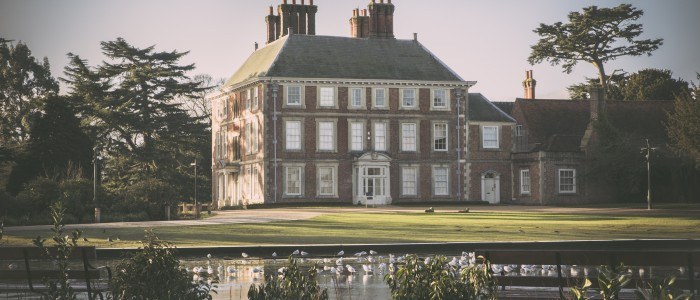13 Aug 2013
Forty Hall Volunteers Houses Of Parliament Tour
by Coleen McDermott (Forty Hall Front of House Assistant)
After the July heat wave, the deluge as seven Forty Hall Volunteers made their way to The Palace of Westminster for a tour organised by Enfield Voluntary Action, courtesy of the office of Andy Love, MP. After waiting in torrential rain at the security gate, we proceeded through airport style security, photos taken for our passes and now we were ready to go.
The Palace of Westminster has 8th century Anglo Saxon origins and was a Benedictine Abbey in the 10th century.The present day Palace of Westminster was constructed after the Great Fire of 1834, the architectural style is Victorian Gothic.The architect was Charles Barry and the interior designer, Augustus Pugin.Since 1987 The Palace is an UNESCO World Heritage site.
Our tour commenced in the 900 year old Westminster Hall which is the oldest building in Parliament and the only part of the ancient Palace of Westminster to survive in its almost original form.The Hall has been the setting for momentous royal events and state trials.Thomas More, Charles I and the Gunpowder Plotters were all tried here. Monarchs, consorts and distinguished statesmen are traditionally laid in state in Westminster Hall, the last two being Sir Winston Churchill in 1965, and Queen Elizabeth the Queen Mother in 2002. Nelson Mandela and Barack Obama have addressed Parliament in recent years and last year Westminster Hall was used for the Queen’s Jubilee celebratory Lunch. Our tour guide gave us an interesting anecdote; when the wooden beams in the Hall were being treated, in the rafters they found old tennis balls which suggested that when King Henry VIII lived in the Palace of Westminster, he played tennis in this ancient hall.
The tour then moved on through to Commons Lobby where there are several statues of former great prime ministers including Sir Winston Churchill and Baroness Margaret Thatcher.The black from Churchill’s foot is now rubbed away as MP’s have repeatedly touched it for luck on entering the chamber before a speech.There is now a sign asking everybody to refrain from doing this!A stunning chandelier enhances the intricately decorated ceiling.
Reaching Central Lobby, this is the place were constituents can meet their MPs.
It also acts as a general congregation area and houses the post office.Here interior designer, Pugin typifies the Victoria love of the ornate with the statues, the tiled floor, the vaulted ceiling, the glittering chandelier weighing three tons and the mosaics of patron saints of the UK.
When we entered the House of Commons it was much smaller than expected.The green benches accommodate 437 of the 659 MPs .Visitors can stand where the prime minister stands at Question Time to see the view he sees or get the effect of being a backbencher from farther back. But no visitor is ever allowed to take a seat.
There is a plaque commemorated to Anthony Berry, the MP for Southgate & Enfield who was killed in the Brighton Bombing.We also saw the specially made sack on the back of the Speaker’s chair, this is used by MPs who have collected names on a petition, the names are placed in the sack ready for the petition to be considered by government.
During our tour the House of Lords was not accessible as a debate was about to commence.However, we were later allowed into the Gallery to listen to a debate.It was the ornate design that caught our attention rather than the debate.
The gold leaf of the throne and canopy was Pugin's masterpiece; the large expanse of gilding dazzles the eyes. Interestingly, the afternoon debate which we did not hear was headline news owing to criticism of the north-east by a certain Lord not to be named and shamed here.
Passing through St Stephen’s Hall, our tour ended in Westminster Hall but not before we were told about the famous suffragette, Emily Davison who in April 1911 spent the night in a cupboard near the crypt chapel in order that the census which was taking place the next day recorded the Houses of Parliament as her home.She later died in 1913 after throwing herself under the horse owned by King George V).
We continued our tour and went onto visit The Jewel Tower across the road from the Houses of Parliament.
The Jewel Tower is a precious survival from the medieval Palace of Westminster. It was built by King Edward III in the 1360s as a secure store for royal treasure. Later it became the records office of the House of Lords, surviving the fire which in 1834 destroyed much of the historic palace. Later still, it served as a testing facility, determining the value of weights and measures for Britain and its empire.This department of weights and measures left the tower in 1931 and after post-war restoration it was opened to the public by English Heritage.
By the end of our tour it was time to head back to Westminster Hall and go to the café for a well earned cup of coffee.
This tour gave us an insight into the workings of Parliament, a window into the past and I would recommend it.If Enfield Voluntary Action offer it again next year do put your name down, its so interesting and informative.
